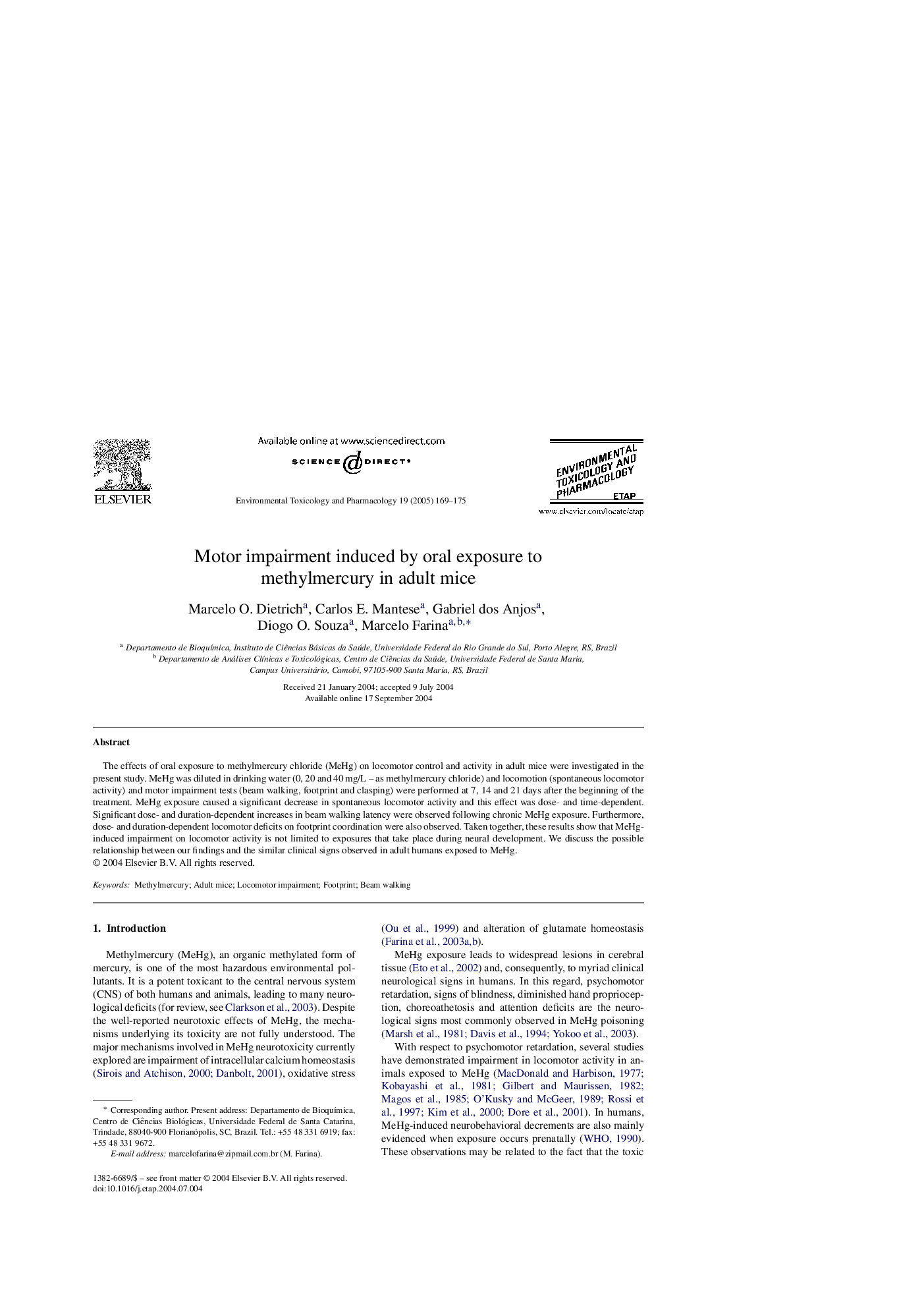| Article ID | Journal | Published Year | Pages | File Type |
|---|---|---|---|---|
| 9030333 | Environmental Toxicology and Pharmacology | 2005 | 7 Pages |
Abstract
The effects of oral exposure to methylmercury chloride (MeHg) on locomotor control and activity in adult mice were investigated in the present study. MeHg was diluted in drinking water (0, 20 and 40Â mg/L - as methylmercury chloride) and locomotion (spontaneous locomotor activity) and motor impairment tests (beam walking, footprint and clasping) were performed at 7, 14 and 21 days after the beginning of the treatment. MeHg exposure caused a significant decrease in spontaneous locomotor activity and this effect was dose- and time-dependent. Significant dose- and duration-dependent increases in beam walking latency were observed following chronic MeHg exposure. Furthermore, dose- and duration-dependent locomotor deficits on footprint coordination were also observed. Taken together, these results show that MeHg-induced impairment on locomotor activity is not limited to exposures that take place during neural development. We discuss the possible relationship between our findings and the similar clinical signs observed in adult humans exposed to MeHg.
Related Topics
Life Sciences
Environmental Science
Health, Toxicology and Mutagenesis
Authors
Marcelo O. Dietrich, Carlos E. Mantese, Gabriel dos Anjos, Diogo O. Souza, Marcelo Farina,
